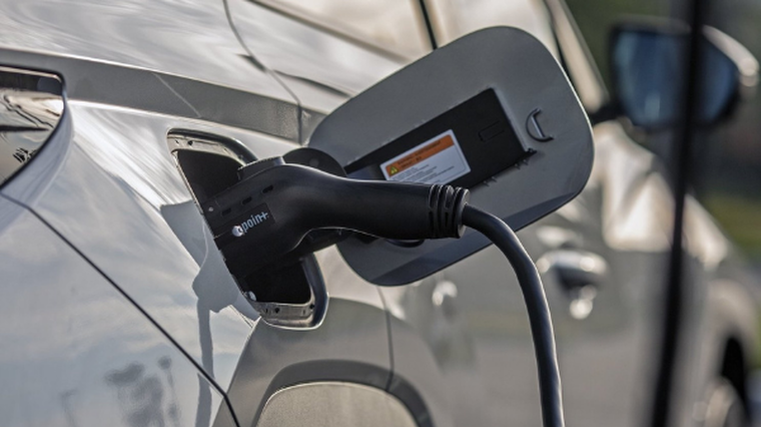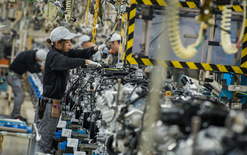Association calls for CCS changes

The Imported Motor Vehicle Industry Association (VIA) is calling on the government to make changes to automotive policies after labelling the clean car standard (CCS) a failure.
It has produced a paper, titled Accelerating the Path to Sustainable Transport, in which it outlines its concerns and makes key recommendations to support effective decarbonisation.
“New Zealand’s journey toward a lower-emissions transport future is stalling – not due to a lack of vision, but because current policy settings are out of step with economic realities,” the report says.
“VIA believes that accelerating the shift to a cleaner vehicle fleet requires a practical, affordable and balanced approach – one that works with the grain of consumer behaviour and used market dynamics.
“The CCS, while well-intentioned, is failing to deliver net benefits. Instead, it’s restricting volumes, ageing the fleet and increasing per-kilometre emissions.
“The fastest way to reduce emissions is to improve access to cleaner, smaller, fuel-efficient vehicles at scale – particularly hybrids – while ensuring fleet volumes remain high.”
Greig Epps, VIA’s chief executive, told Autofile Online the association wants the CCS to be revamped, if not replaced. It also advocates making the cost of the scheme more transparent at purchase, introducing user-pays levies on fuel and applying a flat-rate penalty instead of using weight adjustments to set individual emissions targets for imported light vehicles.
The paper echoes those sentiments and was released by VIA on May 29. A copy has also been sent to Chris Bishop, Minister of Transport.
‘Unintended consequences’
Epps says VIA’s analysis of the CCS shows the scheme is failing to deliver the expected environmental benefits and directly undermining progress by constraining access to cleaner, affordable used vehicles.
“The clean car standard was meant to green our roads, but it’s stalling fleet renewal and ageing our vehicles,” he adds.
“VIA initially supported the clean car programme’s intent to reduce emissions but warned in October 2021 that its design could lead to unintended consequences, including vehicle shortages, rising costs, market inefficiencies, fleet ageing and flawed incentives – predictions that, as much as everyone hoped otherwise, have proven to be true.
“We encourage the Government to decide whether to recalibrate to create a greener, more sustainable transport system. The alternative is rising costs, older cars and missed climate targets.”
He adds industry data shows that unless government policy is urgently reformed, used import volumes could fall to 60,000 units by 2028 – a level last seen before the liberalisation of vehicle tariffs in the late 1980s.
A contracting pipeline means fewer efficient vehicles are available to replace the old, high-emitting ones still on New Zealand’s roads.
That dynamic, compounded by cost-of-living pressures, he warns will incentivise owners to repair and retain older cars, which will effectively reverse the emissions gains CCS was designed to produce.
“The average vehicle age is climbing, and with it, emissions per kilometre,” notes Epps. “Treasury warned back in 2019 that fleet refreshment, not just cleaner cars, was critical to reducing net emissions. VIA’s latest reports show this advice was not heeded.”
He says the fastest way to cut light-vehicle emissions is to target the energy source, not just the car. As a result, the paper advocates for a transparent, user-pays fuel levy to reflect the true climate cost of driving.
VIA states that making petrol more expensive at the pump rather than only adding a cost that penalises the importation of a car will better encourage a change in consumer behaviour across all vehicle types.
“We believe this would shift the incentive from vehicle purchase decisions alone to everyday usage – a more equitable approach,” continues Epps. “Especially given that vehicle supply is driven by Japanese auction markets and foreign exchange rates far beyond the control of Kiwi buyers or importers.”
Penalty plan
Epps adds that the CCS has produced a misaligned set of targets and incentives for vehicles coming into the country.
“For example, current weight allowances mean that heavier vehicles receive more lenient emissions benchmarks, creating a perverse incentive that favours larger cars, despite their greater fuel use.
“Without affordable used hybrids and electrics flowing into the country at scale, emissions will continue to rise despite regulatory efforts.”
He wants the weight adjustment removed and to instead have a flat penalty for each gramme of carbon dioxide over a set threshold applied at first registration and displayed at the point of sale.
VIA also highlights that an effective response to transport emissions requires a whole-of-system approach. Besides regulating cars, it says the government needs to invest in public transport infrastructure, electrify bus fleets, expand train services, and support active transport options such as cycling and walking.
“The CCS can’t carry the entire weight of our climate commitments and the data supports this,” explains Epps.
“By rebalancing policy focus to include modal shift – encouraging more people to choose buses, bikes, or trains instead of cars – New Zealand can achieve meaningful emissions reductions while also improving health, congestion and social equity.”





